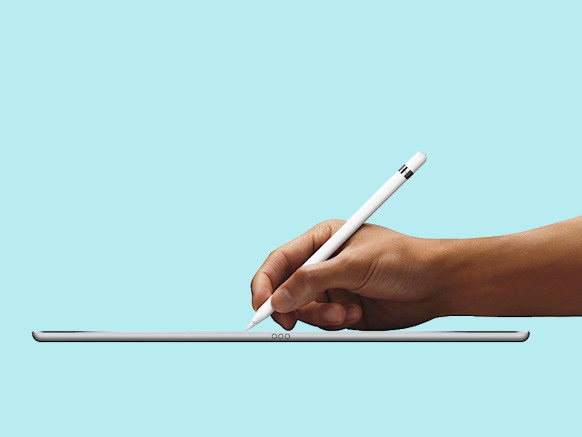

By Andrea Peterson and Brian Fung
Apple's latest accessory is a return to the written word — not so much a stylus as a digital pen that harks back to the way that humans captured language for centuries before the keyboard made cursive an obsolete art.
Analysts say the $99 Apple Pencil, announced Wednesday as an add-on to the new supercharged iPad Pro, is part of a wider move by the tech industry to convince consumers that computing doesn't have to be limited to, well, computers and smartphones. Instead, Apple is focused on giving new, digital capabilities to more traditional platforms.
But it's also a return to an early era of computing history. While Apple has turned the touchscreen into the center of so many of its mobile devices, the stylus was key to some of the earliest digital "tablet" incarnations.
One of the early version was built by the RAND Corporation in the 1960s. Dubbed the "RAND Tablet," it didn't look very much like an iPad or even a Star Trek Data PADD.
Instead, this "tablet" was longer than a man's forearm with a primitive electronic touch pad in the middle that users could write on using the pen-like stylus attached to the device via a wire — all hooked up to tube-television style monitor.
But this type of manual interface didn't take off. Instead, it lost out to the mouse-and-keyboard pairing that's been a hallmark of the personal computer industry for decades.
It wasn't until the mid-90s that the stylus saw a popular resurgence, this time in the digital assistant market
Remember Palm Pilots? The styluses that accompanied those handheld devices were little more than plastic toothpicks, with no particular special abilities.
Soon, the stylus was thrown back into the shadows again — this time by BlackBerry's physical keyboards. They represented a major advance in technology at a time when the most sophisticated cellphones were still reliant on numpads for text messaging.
But even the physical keyboard was quickly overtaken by the simplicity of the iPhone's finger-based touch interface. Touchscreens promised a new era of interactivity that, for many consumers, rendered the stylus obsolete (if they could remember them at all). Why carry around an extra tool when you've got five of them attached to one hand?
Some diehard loyalists still swore by the stylus even as touchscreens proliferated around the globe. But these were a specialized few, limited to professional designers and digital artists. For most of us, fingers were good enough.
That was then. But now, as consumers have witnessed digital technology spreading into seemingly every part of their lives, they've also become more sophisticated. They may not be making Pixar-level animated films in their basements, but we've certainly seen the rise of the "prosumer" class that blurs the line between novice and advanced users of technology. In short, now is the perfect time for the stylus to make a comeback.
There have been signs of hope for stylus fans: Nintendo's DS mobile consoles and then the Wii U gave styluses a new life in the gaming world; other manufacturers have attempted to bring the stylus into the smartphone market — particularly Samsung, with the tablet-like Galaxy Note series. There remains a healthy market for third-party styluses.
And Microsoft already offers a "Surface Pen" that is much like the Apple Pencil — a digitally sophisticated, pressure-sensitive piece of hardware.
But the Apple Pencil isn't some play for a mass market return to writing things by hand: It's an add-on for iPad's aimed at enterprise customers and graphics professionals with a relatively hefty price tag.
This may still seem like a surprisingly retro-step for Apple, especially considering Steve Jobs's scorn for styluses. (He once said that a stylus with an iPad would be a sign that the company "blew it.")
But in a lot of ways, what Apple is doing is being already being done across the tech industry. Our most mundane devices — refrigerators, cars, TVs — are being updated for a world in which connectivity and communication offer superpowers.
So it's no surprise to see Apple look back in time toward some of our most venerable productivity tools. Apple's efforts go beyond the pencil, whose origins date back to 16th-century Italy. The company's new Smart Keyboard for the iPad also represents a departure of sorts — a recognition that newfangled touch interfaces have their limits.
By returning to more physical forms of interaction, Apple is not only conceding that tablet users need more flexibility — it's making an argument that even the most mundane-seeming items can become part of a sophisticated computing environment. That's perfectly fine — and it's consistent with Apple's goal of bringing other, heretofore undigitized routines into the modern age.
"If you think about the Apple Watch in particular," said Dan Cryan, an analyst at IHS, "and the iPad Pro demo, they were both squarely geared around almost traditional computing tasks as a way of illustrating what that future looks like — traditional computing tasks being taken onto the watch or the tablet."
WP-Bloomberg




